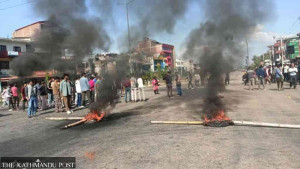National
Kakre Bihar to be renovated at Rs 110 million
Kakre Bihar, a ruin of an ancient Hindu-Buddhist temple on top of a small hillock in Surkhet Valley, is slated for renovation.
Motilal Poudel
Considered to be only second to Lumbini in terms of archaeological and historical significance, the temple built of solid stone with bronze statues of Lord Buddha as well as numerous Hindu deities stands as a symbol of religious harmony among the people of the region.
Bhesh Narayan Dahal, director general of the Department of Archaeology (DoA), said his department will soon be inviting tender bids for the renovation of the ancient temple. Stating that they plan to complete renovation work within three years, Dahal said that initial budget estimates for carrying out renovation work hovers in the range of Rs 90-110 million, adding that they will also be reconstructing important artefacts if they are found to be lost.
The DoA stated that the renovation works will be conducted preserving the unique architectural style of the temple, and that structures destroyed or irreparable will be reconstructed by architects. As per the DoA, the site will be renovated retaining its original form without any changes.
During the excavations of remnants at Kakre Bihar in February 22, 2001, some 2,028 artefacts of archaeological and historical significance were dug up. Along with various statues of Lord Buddha, statues of Saraswati, Lord Vishnu, Padma, conch shells and chariot wheels were found during the excavations. The DoA had started reconstruction and renovation of the Shikhar Saili temple at the location in 2005.
Spread over approximately 180 hectares of land in the middle of a jungle, the reason behind the construction of the temple is shrouded in mystery and is yet to be ascertained. Although there are various theories regarding the origins of the temple, no concrete evidences to back them up has been found till date. According to some accounts, to halt the spread of Buddhism, Shankaracharya’s followers and apprentices had demolished the structure while heading to Tibet. Likewise, another theory suggests that the structure built after the arrival of Kukrachhanda Buddha was originally known as Kukrachhanda Bihar and came to be known as Kakre Bihar with the passage of time. According to archaeologists, the 12th century temple turned into ruins towards the end of 16th century.




 11.12°C Kathmandu
11.12°C Kathmandu













%20(1).jpg&w=300&height=200)

